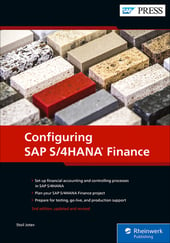In a world where controllable cost is used for performance management, the allocation of corporate overhead in determining full cost is still necessary for product costing and segment reporting for footnote disclosures to the financial statements.
This is a question with an answer that often eludes finance and accounting professionals: how to handle corporate cost allocation? SAP Profitability and Performance Management (PaPM) is a viable option to facilitate management and financial reporting because of its traceability.
My History of Activity-Based Costing
Before coming to discover and utilize SAP solutions, I (Alvin) started working with activity-based costing (ABC) in 1999 to resolve a fundamental issue that a client had in regard to preventing cost distortion when allocating corporate overhead. We conducted extensive interviews of all departments under the corporate umbrella to understand the underlying headquarter functions. The insight gained from the interviews would help determine an appropriate cost driver and overall methodology to allocate corporate cost.
Using a desktop application called EasyABC by Oros, I developed my first model by setting up a simple organizational and general ledger hierarchy, and applied allocation percentages to drive resource costs to activities and then to cost objects. After delivering our findings, the client ultimately realized that the largest headquarters’ cost, executive compensation, drove the outcome of the results. It was then determined that the most reasonable resource driver was one that could correlate the time the executive spent with the subsidiary or affiliate—in this case, aviation flight logs.
Fast forward 20 years and after working in both the oil & gas and manufacturing industries, I have come full circle and back to utilizing the same basic management accounting concept to provide performance management and financial accounting reports to facilitate proper and informed decision making. The main difference today, compared to back then, is the level of granularity and traceability available using PaPM.
Discovering SAP PCM
I have been working with the SAP Profitability and Cost Management (PCM) solution since 2015, and the tool has come a long way to provide clarity on how costs are being allocated. SAP PCM has the capability of expressing values in the form of tabular reports or grids by selecting the required dimensions and referencing underlying system tables.
The shortcoming with SAP PCM was the need to aggregate responsibility centers and simplify line items, because the combination of all the required dimensions put a lot of calculation load on the CPU processing architecture and RAM memory. This is because the SAP PCM application was written to utilize only 64 logical CPUs, which was plenty at the time (SAP Note 1918921), but allows the use of a limited-number dimension combination. I was restricted by SAP PCM system limitations in the development of detailed and comprehensive models. Therefore, I had to limit my analysis, for example, to the top 200 organization entities and top 30 general ledger cost categories for the models to function, let alone for the calculations to complete.
Getting Started with SAP PaPM
SAP recognized that more functionality was desired by customers and rolled out PaPM. In 2019, we ran our pilot PaPM project; there were no longer any limits on dimensions (column fields) and table size (row records). With PaPM, we could deliver the most granular level of detail while also providing aggregated results, all without taking a performance hit. These calculations utilize the SAP S/4HANA in-memory computing capability, giving us traceability for every available value.
This traceability starts with the function configuration and then graphically through the visual modeler. The results can then be expressed visually using tables or through graphs. The calculation can be validated and available to be audited at each step of the process; this was a challenge using SAP PCM because you had to know which internal table or grid could show the desired results, and it required considerable system resources for traceback for example.
SAP PaPM facilitates a natural progression in the development of analytical and visualization tools which was not possible before the advent of in memory computing. In a way, SAP PaPM complements my experience with SAP PCM because I am able to draw on a library of SAP PCM allocation functions. SAP PaPM has additional promising capabilities to allow an analyst to run what-if scenarios without having to extract data from the original data source into a spreadsheet, but be able to leverage the tool’s capabilities to do this. Even though the double entry accounting and activity-based costing has not changed, the application of these concepts with the level of detail now available with SAP PaPM provides a powerful combination in delivering sound insight to management.
Learn more about project planning for SAP PaPM here.
Conclusion
My journey with SAP PaPM is just beginning, but I am looking forward to utilizing more of its integrated capabilities like what-if simulations for decision support and approval workflows to drive process accountability. Perhaps these will lead to additional blog posts on these topics in the future. Be sure to subscribe to SAP PRESS’ weekly blog recap so that you can be notified when any new posts become available. I welcome your comments below, especially from anyone who was in my original ABC training class at Vero Beach, Florida from the Culinary Institute of America.




Comments